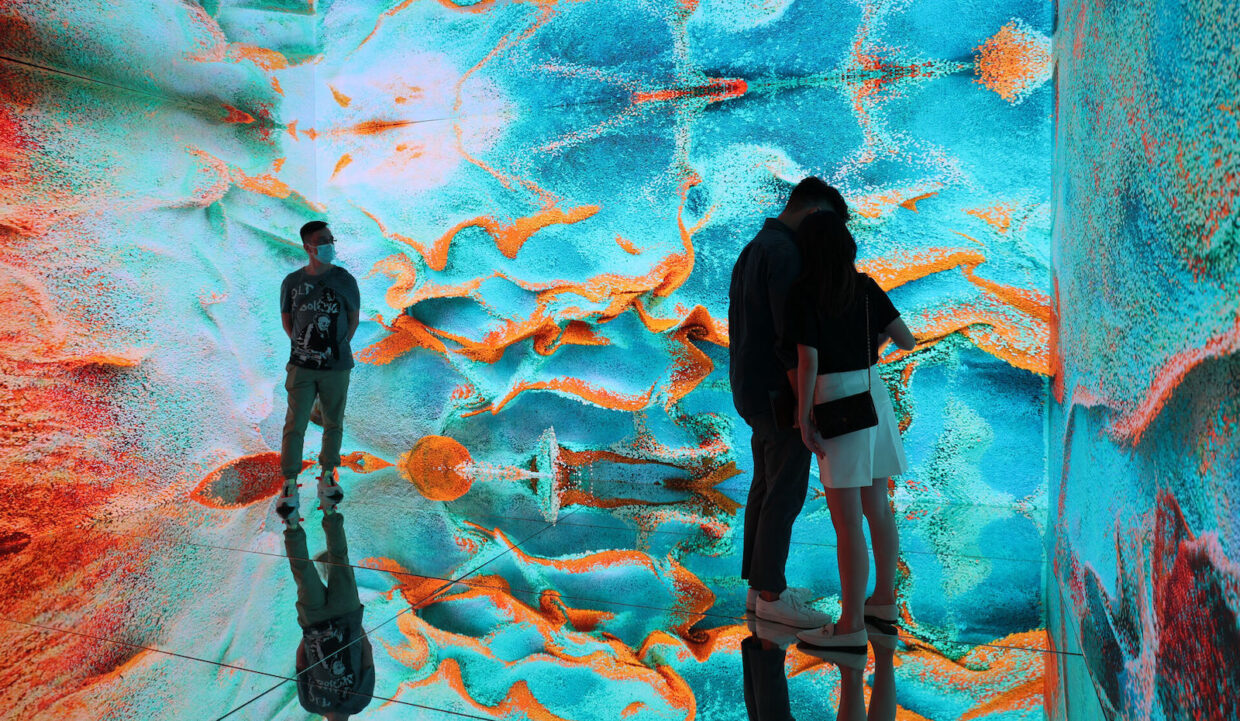|
Getting your Trinity Audio player ready...
|
Navigating the tumultuous seas of the digital economy, OpenSea, a former colossus in the NFT marketplace, confronts a stark new reality. The once $13 billion-valued company has seen its worth precipitously decline by 90%, as per Coatue Management’s assessment—a clear signal of the NFT sector’s inherent instability. This period of upheaval has also necessitated a significant downsizing of OpenSea’s workforce, mirroring the broader market’s deflation from its previous exuberant peaks.
The decline in trading volumes is pronounced: a plunge from February 2022’s high of approximately $1.2 billion to just $307 million by October, according to CryptoSlam. This downturn has permeated the cultural tapestry of the art world, challenging the once-celebrated role of NFTs as pioneers of a new paradigm in art ownership and community engagement.
Despite the bursting of the speculative bubble, the cultural footprint of NFTs remains indelible. Museums and cultural institutions continue to adopt the technology, recognizing its capacity to democratize art ownership, broaden accessibility, and generate novel revenue streams. This enduring relevance of NFTs, even amidst market recalibration, underscores their potential for sustained innovation within the arts.
In response to these market shifts, OpenSea has redoubled its commitment to innovation, with CEO Devin Finzer at the helm of a strategic course correction towards “OpenSea 2.0.” This recalibration reflects a wider movement within the NFT sphere, favoring a transition from rapid, often unsustainable, expansion to a more deliberate and enduring growth trajectory.
Concurrently, the intrinsic utility of NFTs within the digital arts sector remains unassailable. Artists such as Refik Anadol and Beeple have capitalized on NFTs to commercialize their digital works and cultivate global audiences, reinforcing the transformative impact of NFTs on the art world. This pivot towards a utility-centric market is redefining collective perceptions and valuations of NFTs as essential components of the digital arts and cultural sectors.
The resilience and utility of NFTs suggest that their core essence and application within cultural and digital art institutions stand firm against the backdrop of market fluctuations. In 2023, the NFT landscape is evolving, with tokens emerging as gateways to exclusive rights, rewards for engagement, and vehicles for personal expression. This progression from transient campaigns to substantial, long-term endeavors signals a strategic evolution in the NFT market.
This wave of innovation is exemplified by projects such as “Iconic Moments,” which introduces Jackson Pollock’s oeuvre into the NFT domain, and the Thyssen-Bornemisza National Museum’s partnership with Olyverse to create NFTs featuring Van Gogh’s iconic works.
Additionally, the burgeoning Asian market, with its robust demand for luxury and digital identity, continues to propel the relevance of NFTs. The region’s surge in NFT search interest and adoption, particularly in China, alongside luxury brands like Gucci and Louis Vuitton entering the NFT fray, highlights the Asian consumer’s predilection for exclusivity and prestige, further invigorating the NFT market.
Ultimately, the valuation of NFTs remains a highly subjective matter, anchored to the fluctuating dynamics of cultural prestige and collector interest. The era of meme-NFTs appears to be receding, giving way to digital art that retains or increases in value through the validation of galleries, museums, and discerning collectors. These established art world entities are emerging as the new standard-bearers of worth in the NFT domain, bestowing their institutional credibility and acumen upon works in this digital realm. As the market continues to mature, it is this seal of approval from the venerable custodians of culture that may well define the lasting value of NFTs, shepherding collectors through the burgeoning virtual galleries of tomorrow.



